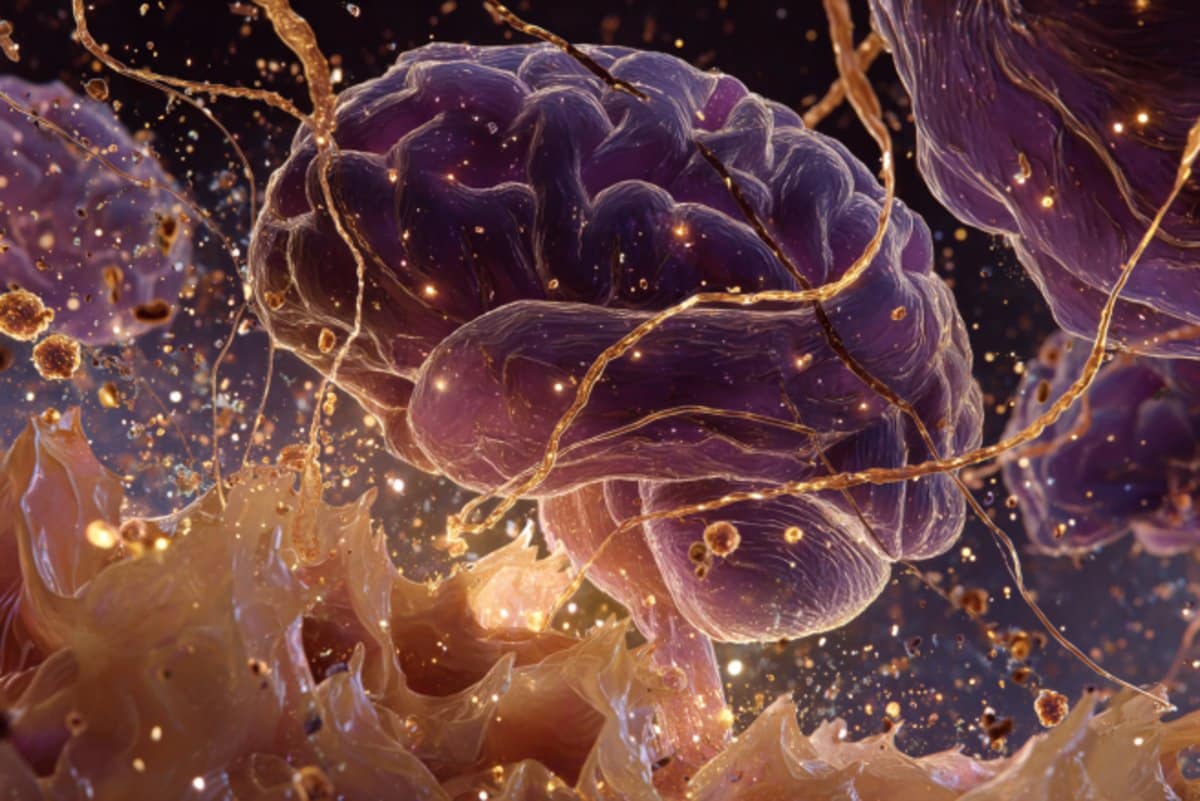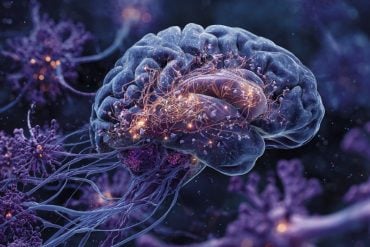Summary: When fruit flies lack essential amino acids, their brains rewire their sense of smell to help them find food rich in the nutrients they need. Researchers discovered that two genes—Or92a and Ir76a—boost the flies’ sensitivity to smells linked with fermented foods and bacteria that produce beneficial amino acids.
Deprived flies were drawn to live bacteria and yeast, guided by odors like diacetyl and PEA, which signaled protein sources that could restore balance. The findings reveal how hunger can reshape sensory perception at the molecular level, offering insights into how all animals, including humans, adapt behavior to internal nutritional needs.
Key Facts
- Genetic Reprogramming: Amino acid deprivation activates olfactory receptor genes that heighten sensitivity to fermented and bacterial odors.
- Microbial Attraction: Flies use smell to locate beneficial bacteria that help replenish missing nutrients.
- Adaptive Sensing: Hunger literally changes the brain’s sensory wiring, turning internal need into targeted foraging behavior.
Source: Champalimaud Centre for the Unknown
Cheese and chocolate might not tempt a fruit fly’s palate, but to a hungry fly short on nutrients, their smell carries a hidden signal. When deprived of certain amino acids – the building blocks of protein – these tiny insects develop a surprisingly refined sense of smell that helps them track down not just food, but specific bacteria living in fermented foods.
For years, scientists have known that animals can sense when they’re missing certain nutrients and will actively seek out foods to compensate. What has remained unclear is how the brain translates this internal nutritional need into a behavioural drive – how a physiological “need” becomes a sensory “want”.

This was the question that motivated researchers in CF’s Behaviour and Metabolism Lab, led by Principal Investigator Carlos Ribeiro, the study’s senior author.
A tale of two genes
Animals, including humans, cannot produce all the amino acids they need. These so-called essential amino acids (or eAAs) must come from food. If even one is missing, the body’s internal chemistry changes dramatically – protein synthesis falters, metabolism slows, and the brain drives a specific appetite for protein-rich foods.
In fruit flies, this behaviour is easy to observe: remove a single essential amino acid from their diet, and they begin to seek out yeast, their primary source of protein. But Ribeiro’s team wanted to know what was happening in the brain to make this shift occur.
Using synthetic diets that each lacked one of the ten essential amino acids, the researchers sequenced RNA (ribonucleic acid) from the heads of flies in eleven different conditions – ten amino-acid-deprived diets plus one fully balanced control. This allowed them to track how the expression of thousands of genes changed depending on which amino acid was missing.
“While the flies’ behaviour was similar across all amino acid deprivations, showing an increased drive to feed, each deprivation had its own unique ‘fingerprint’ in terms of gene expression”, says Gili Ezra-Nevo, the study’s first author.
“But despite those differences, some genes changed in the same way no matter which amino acid was missing”.
Among those shared changes, one pattern stood out: two olfactory receptor genes, both involved in smell, were consistently upregulated in response to amino acid deprivation. These genes – Or92a and Ir76a – became the key to understanding how the flies’ sense of smell is fine-tuned to meet their needs.
The yeast connection: how smell shapes flavour
The first receptor, Or92a, was already known to respond to diacetyl – a molecule that gives butter-flavoured popcorn its distinctive aroma and contributes to the smell of wine and beer.
Yeast produces diacetyl during fermentation, and since yeast contains all essential amino acids, it makes sense that this smell would be especially attractive when flies are protein-deprived.
When the researchers tested flies lacking Or92a, the insects could still locate yeast but fed on it less.
“They could smell where it was, but it didn’t taste as good to them”, Ezra-Nevo explains. “That’s because olfaction isn’t just about finding food – it also contributes to flavour and the evaluation of palatability”.
The team went a step further, using a mutant strain of yeast that didn’t produce diacetyl. The result was the same: flies were less likely to feed. Losing that key olfactory cue disrupted their sense of flavour, making the food less appealing.
Just as humans lose appetite or enjoyment of food when they have a blocked nose, flies rely on a close interplay between smell and taste to regulate feeding.
“Chocolate neurons” in the brain?
The second receptor, Ir76a, proved even more mysterious. Searching through microbiology and food-science literature, the researchers discovered that fermented foods such as cheese and chocolate emit a compound called PEA, which activates Ir76a.
Testing showed that flies’ olfactory neurons responded strongly to the odour of chocolate but not to cheese. Had they found “chocolate neurons” in the brain? Not quite.
Since flies don’t normally feed on chocolate or cheese, the team dug deeper and found the real connection: both foods are fermented by Lactobacillus and Acetobacter bacteria, which also produce the same compound.
“That’s when things clicked”, says Sílvia Henriques, the study’s co-first author. “The flies weren’t being attracted to the chocolate itself – they were responding to the bacteria growing in those foods. And those bacteria are also natural residents of the fly microbiome”.
When the researchers exposed flies to live Lactobacillus and Acetobacter bacteria, the Ir76a neurons responded even more strongly. Behavioural experiments confirmed the link: amino-acid-deprived flies actively increased their feeding on bacteria – but only when the bacteria were alive and metabolically active.
Dead bacteria no longer triggered feeding. In other words, the flies were seeking the bacteria for their metabolic benefits.
And when the team knocked out the Ir76a receptor, the flies lost interest altogether, even when nutrient-deprived.
“This was the most surprising finding”, says Ezra-Nevo. “It showed that the flies’ sense of smell was literally tuned to detect bacteria, and that this tuning depended on their internal nutritional state. Amino acid deprivation didn’t just change neural activity – it changed which receptors were being made in the first place”.
Microbial allies in flies – and in us
Why would a fly seek out bacteria when amino acids are scarce? Previous research had shown that feeding on certain bacteria improves egg production in amino-acid-deprived flies.
Other studies have revealed that the gut microbiome can boost amino acid absorption under nutrient-poor conditions by producing enzymes that break down proteins more efficiently.
“By following their nose towards bacteria, it seems the flies have evolved to use microbes as allies, seeking out partners that increase their chances of survival when challenged by amino-acid deprivation”, says Henriques.
The parallels to humans are intriguing. Many traditional diets include fermented foods – from kimchi to yoghurt and kefir – long prized for their preservative properties, yet an underappreciated part of their appeal may be that they harbour beneficial bacteria that aid digestion and nutrient absorption.
The findings suggest that our appetite for fermented foods may stem in part from an ancient biological logic. When nutrients are scarce, the body appears to tune its sensory systems to locate what it needs – sometimes by detecting microbes rather than macronutrients.
Senses in flux
This study touches on a broader question in biology: how internal physiological states shape perception and behaviour. The idea that hunger can alter sensory processing and neural activity isn’t new, but this research goes further – showing that, across multiple nutritional deprivations, certain sensory receptors are reprogrammed at the molecular level to enhance fitness.
In other words, the flies’ brains are not just interpreting hunger – they’re physically changing the way they sense the world to meet it. Although we often think of the senses as fixed, they are in fact remarkably dynamic.
The Ribeiro Lab’s study shows that when flies are missing essential amino acids, they undergo changes in gene expression that help them detect foods – or microbes – that can resolve that deficit and help them adapt to nutritional challenges. It’s a striking example of how deeply intertwined metabolism, the brain, and behaviour can be.
Key Questions Answered:
A: Their brains boost the activity of smell receptors that detect odors from fermented foods and bacteria rich in amino acids.
A: Flies seek out live bacteria that aid nutrient absorption and reproduction when their diet lacks essential amino acids.
A: It shows how internal nutritional needs can reprogram sensory systems, linking metabolism, behavior, and the microbiome in survival-driven feedback loops.
About this hunger and sensory perception research news
Author: Hedi Young
Source: Champalimaud Centre for the Unknown
Contact: Hedi Young – Champalimaud Centre for the Unknown
Image: The image is credited to Neuroscience News
Original Research: Open access.
“Lack of single amino acids transcriptionally tunes sensory systems to enhance microbiota intake” by Carlos Ribeiro et al. Current Biology
Abstract
Lack of single amino acids transcriptionally tunes sensory systems to enhance microbiota intake
Adequate intake of dietary essential amino acids (eAAs) is vital for protein synthesis and metabolism. Any single eAA deprivation is sufficient to increase protein intake in Drosophila melanogaster.
How such nutritional “needs” are transformed into behavioral “wants” remains poorly understood.
We derived transcriptomes from the heads of flies deprived of individual eAAs to identify mechanisms by which this is achieved.
While specific eAA deprivations have unique effects on gene expression, a large set of changes is shared across deprivations.
Namely, we show that Or92a, which is essential for the exploitation of yeast, the main protein source for flies, is upregulated upon eAA deprivation.
Additionally, Ir76a upregulation is crucial for feeding on commensal bacteria that ameliorate the fitness of eAA-deprived flies.
Our work uncovers common and unique transcriptional changes induced by individual eAA deprivations in animals and reveals novel mechanisms underlying the organism’s behavioral and physiological adaptation to eAA challenges.






